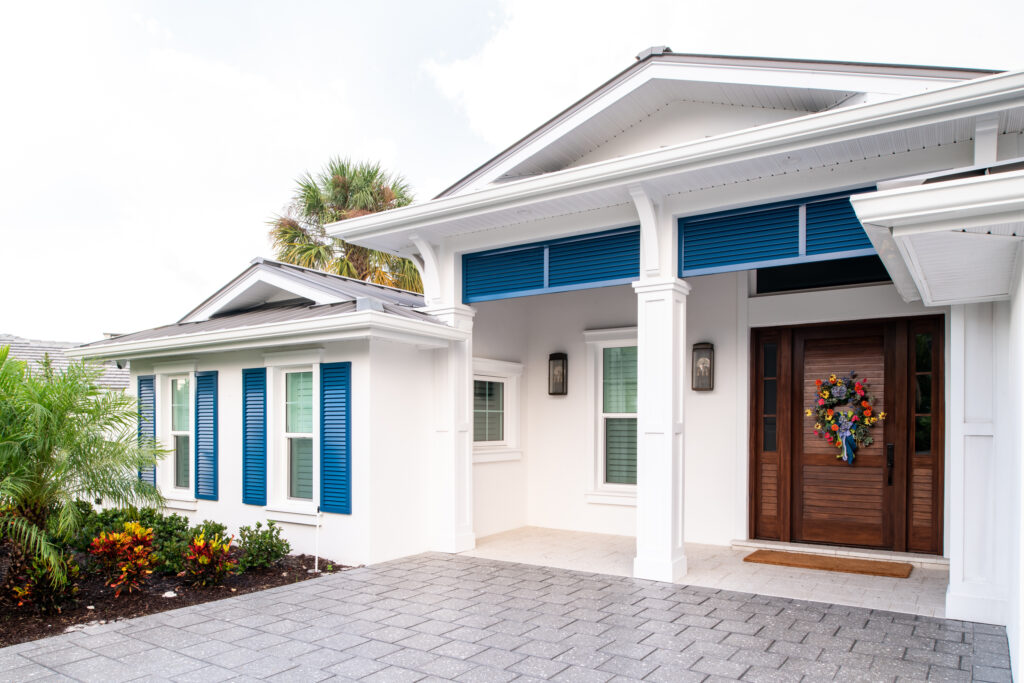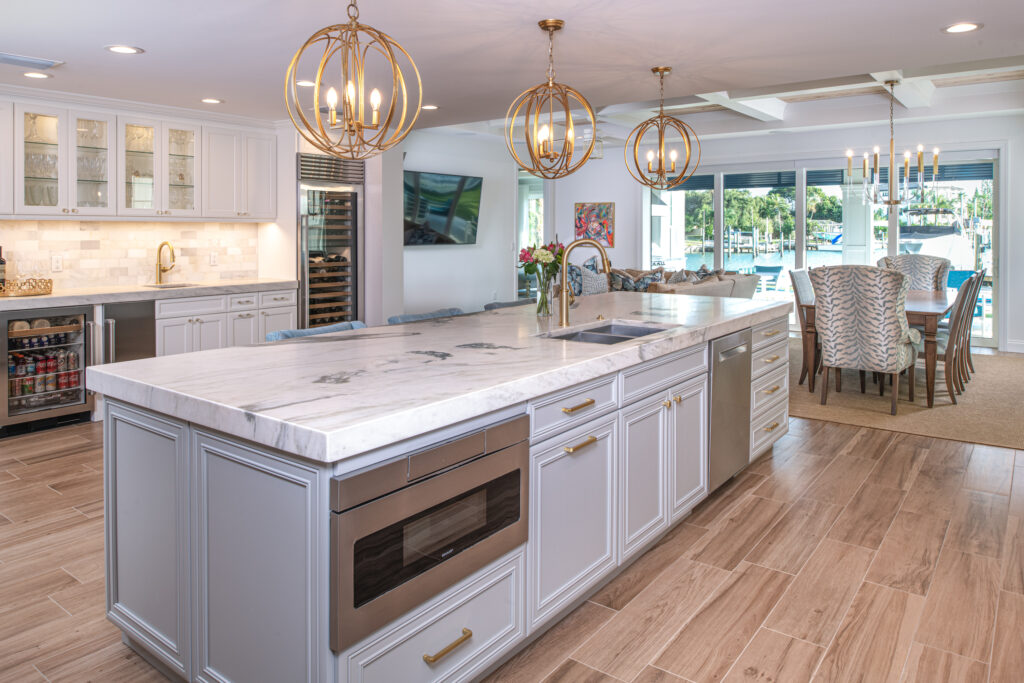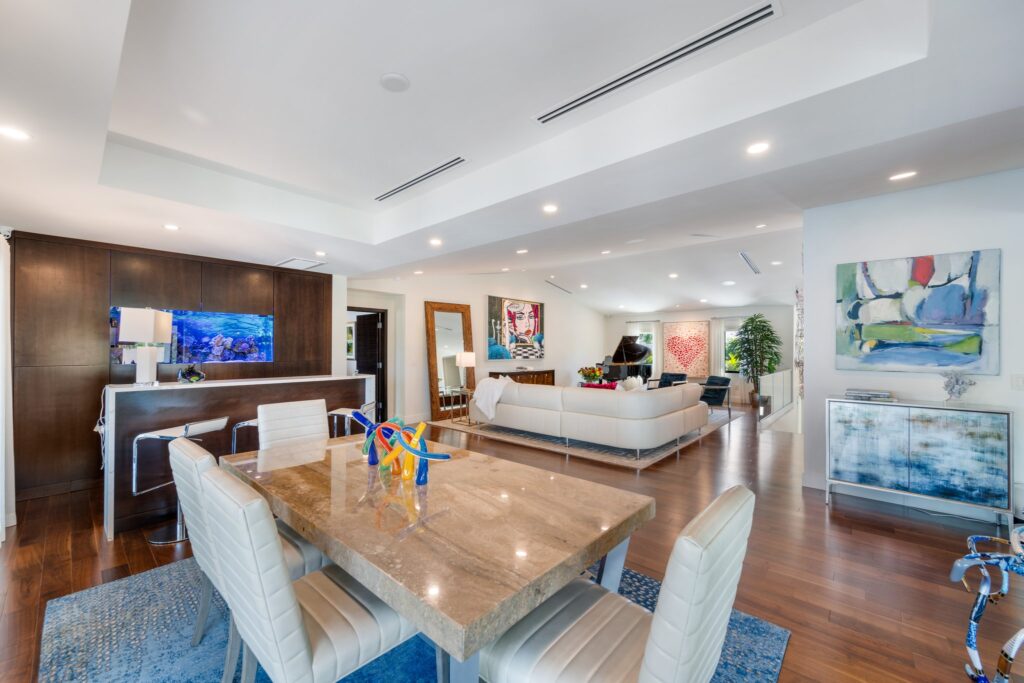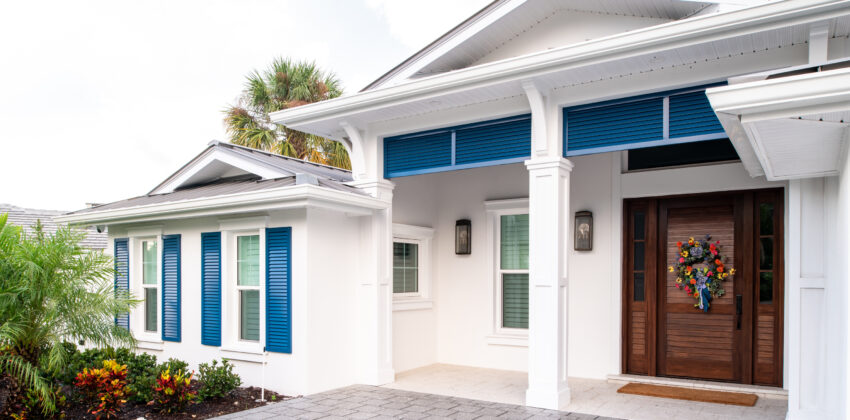
Explore the unique characteristics and design elements of Coastal Contemporary architecture, which has increased in popularity in the Tampa Bay Area in recent years.
Over the last decade, Coastal Contemporary has been one of the most requested architectural styles from our Tampa Bay Area clients. Blending two different styles, it’s a natural fit for St. Pete and surrounding locations, thanks largely to the prevalence of homes located near the water. In this post we review what makes the style so appealing and the common features of Coastal Contemporary homes.
Understanding Coastal Contemporary Architecture
Coastal Contemporary architecture is a style that combines the relaxed, beachy vibes of coastal design with the sleek, modern elements of contemporary architecture. It is characterized by its clean lines, open floor plans, and seamless integration of indoor and outdoor spaces.
One of the key concepts behind Coastal Contemporary architecture is the idea of capturing and maximizing natural light. Large windows, skylights, and glass walls are common features in these homes, allowing for a bright and airy feel throughout the space.
Another important aspect of Coastal Contemporary architecture is the use of sustainable and eco-friendly materials. From reclaimed wood to energy-efficient appliances, these homes are designed with the environment in mind.
In terms of aesthetics, Coastal Contemporary architecture often incorporates natural elements such as wood and stone, as well as neutral color palettes with pops of coastal-inspired blues and greens. The goal is to create a soothing and serene atmosphere that complements the surrounding coastal landscape.
Understanding the principles and design elements of Coastal Contemporary architecture is essential for creating a space that truly embodies this style. By combining the best of Coastal and Contemporary design, these homes offer a modern take on coastal living.
Key Features of Coastal Contemporary Architecture

Coastal Contemporary architecture is known for its distinctive features that set it apart from other architectural styles. Here are some key features to look for:
1. Open Floor Plans: Coastal Contemporary homes often have open floor plans that create a seamless flow between indoor and outdoor spaces. This allows for easy entertaining and a sense of spaciousness.
2. Large Windows: Natural light is a key element in coastal contemporary design, and large windows play a crucial role in achieving this. Floor-to-ceiling windows, sliding glass doors, and skylights are commonly used to maximize the amount of natural light in the space.
3. Outdoor Living Spaces: Coastal living is all about enjoying the outdoors, and Coastal Contemporary architecture reflects this with the inclusion of outdoor living spaces. Whether it’s a spacious patio, a rooftop deck, or a backyard pool, these homes prioritize outdoor relaxation and entertainment.
4. Sustainable Materials: As sustainability becomes increasingly important, Coastal Contemporary architecture emphasizes the use of eco-friendly materials. From bamboo flooring to recycled glass countertops, these homes are designed with the environment in mind.
5. Neutral Color Palettes: Coastal Contemporary design often features neutral color palettes with pops of coastal-inspired blues and greens. These colors create a calming and serene atmosphere that complements the coastal surroundings.
By incorporating these key features, Coastal Contemporary architecture creates a unique and modern living experience that embraces the coastal lifestyle.
Materials and Colors in Coastal Contemporary Architecture

The choice of materials and colors plays a crucial role in defining the aesthetic of Coastal Contemporary architecture. Here are some commonly used materials and colors:
1. Wood: Natural wood is a staple in Coastal Contemporary design. From hardwood floors to exposed ceiling beams, wood adds warmth and texture to the space.
2. Stone: Stone accents, such as marble countertops or a stone fireplace, can add a touch of luxury to a Coastal Contemporary home.
3. Glass: Glass is a key element in Coastal Contemporary design, as it allows for the flow of natural light and creates a seamless connection between indoor and outdoor spaces.
4. Neutral Colors: Coastal Contemporary design often features a neutral color palette consisting of whites, beiges, and grays. These colors create a clean and timeless look that complements the coastal surroundings.
5. Coastal-Inspired Colors: To add a touch of coastal charm, pops of blues and greens inspired by the ocean can be incorporated through accent pieces, artwork, or upholstery.
By using a combination of these materials and colors, Coastal Contemporary architecture achieves a harmonious blend of natural elements and modern design.
Incorporating Sustainability in Coastal Contemporary Design
Sustainability is a key aspect of Coastal Contemporary design. Here are some ways to incorporate sustainability into your coastal contemporary home:
1. Energy-Efficient Appliances: Choose appliances with high energy efficiency ratings to reduce your home’s energy consumption.
2. Solar Panels: Install solar panels to harness the power of the sun and generate renewable energy for your home.
3. Water Conservation: Implement water-saving features such as low-flow faucets, dual-flush toilets, and rainwater harvesting systems to minimize water waste.
4. Use of Recycled Materials: Opt for materials that have been recycled or upcycled, such as reclaimed wood or recycled glass countertops.
5. Natural Ventilation: Design your home to take advantage of natural ventilation by strategically placing windows and utilizing cross breezes to reduce the need for artificial cooling.
By incorporating these sustainable features, you can minimize your environmental impact and create a more eco-friendly Coastal Contemporary home.








